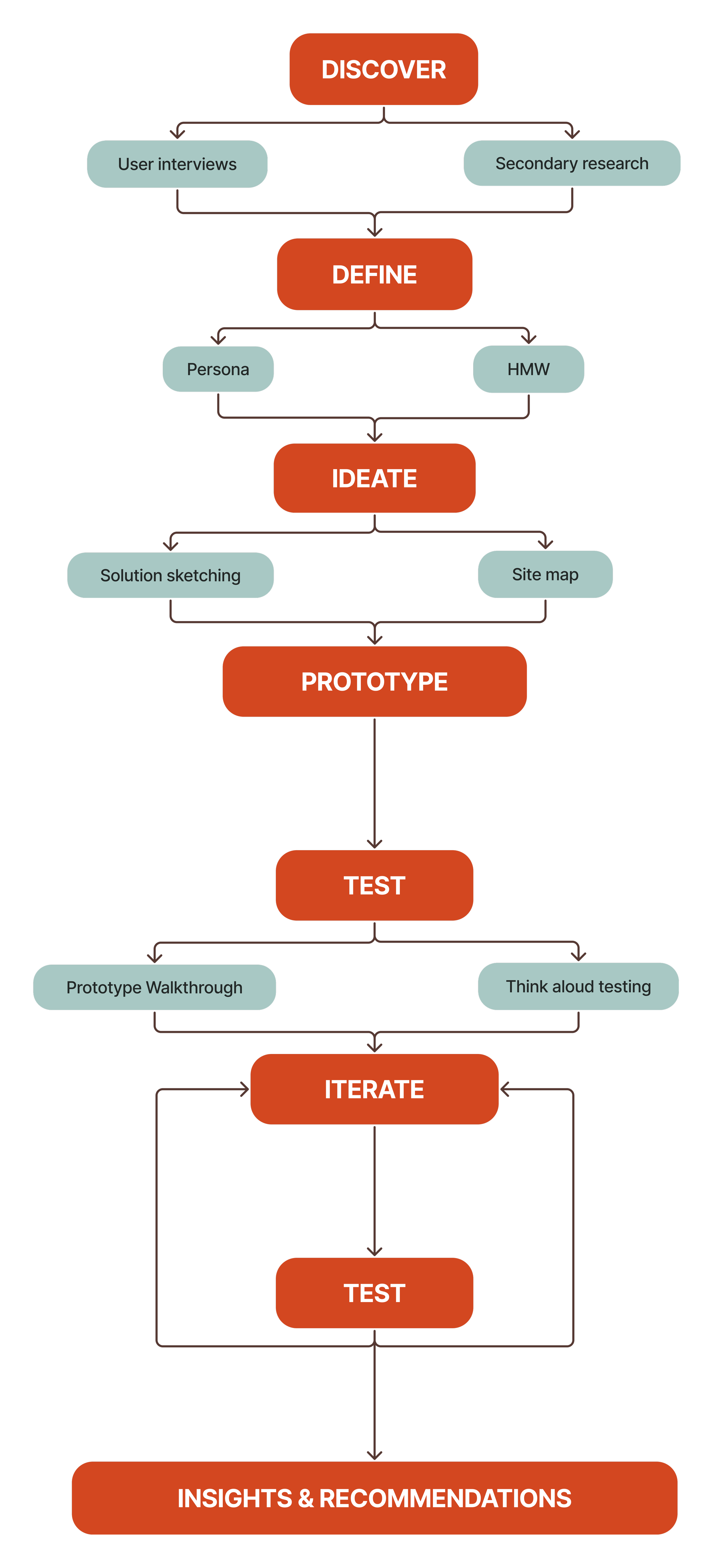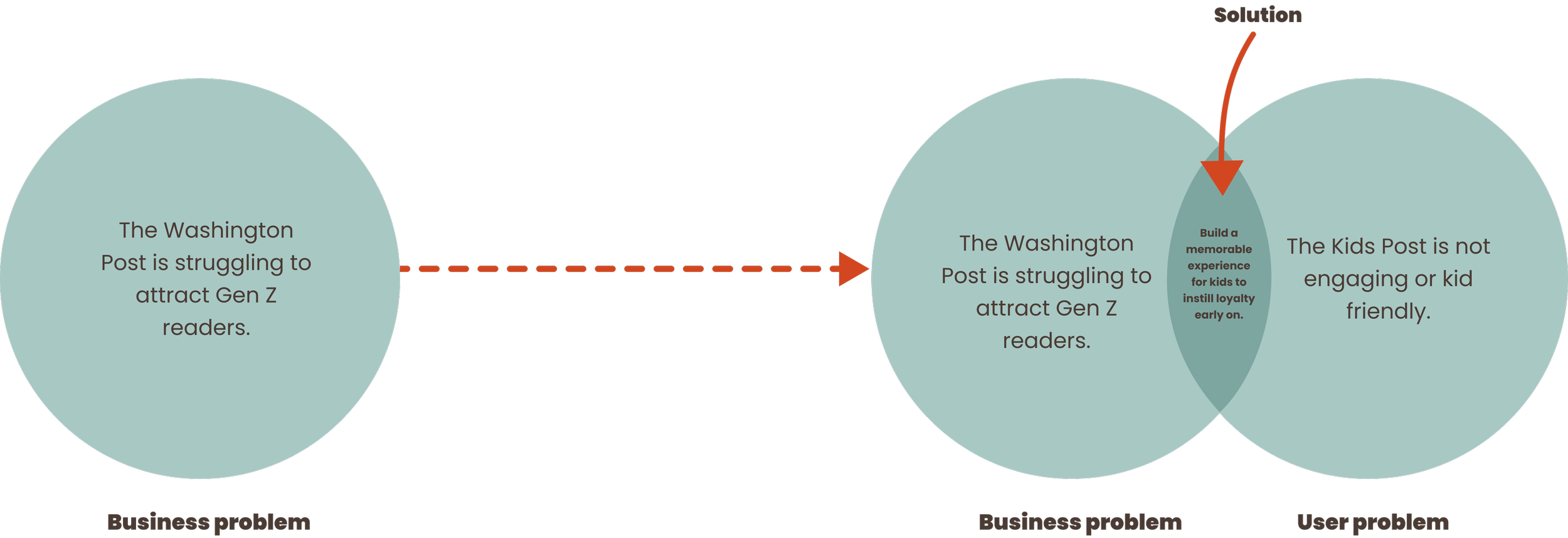
The Washington Post
A UX research and emotional design project exploring how The Washington Post can leverage childhood brand nostalgia to build lasting connections with future readers.
Role: UX Researcher & Designer
Duration: 11 weeks | Spring 2022
Methods: User interviews | Co-design with kids | Prototype testing | Emotional analysis
I followed an iterative, human-centered design process combining user research, co-design, and emotional analysis.
In the following sections, I walk through how this process unfolded—from defining the problem to uncovering new opportunities for The Washington Post.
Process Overview
Context & Opportunity
Over the past decade, The Washington Post has undergone a major digital transformation under owner Jeff Bezos and former CEO Fred Ryan. Despite its technological advances, the organization continues to face a challenge: attracting Gen Z readers. Most of this generation consumes news through side-door sources—social media feeds and aggregator apps—rather than directly visiting news sites.
As I explored the problem space, I came across the kids’ section on The Washington Post app. It caught my attention that the section maintained the same “serious” tone as the rest of The Post. Around the same time, my secondary research into purchase behavior introduced me to the concept of childhood brand nostalgia—the idea that positive childhood associations can strengthen brand loyalty later in life. This made me wonder if there was an opportunity for The Washington Post to build lasting connections by creating more memorable, kid-friendly experiences.
Research & Discovery
Key Questions
What makes people buy things?
What do Gen Z buy most?
What is brand loyalty, and how do companies build it?
What is childhood brand nostalgia?
Current State
“Whatever it is, the way you tell your story online can make all the difference.”

